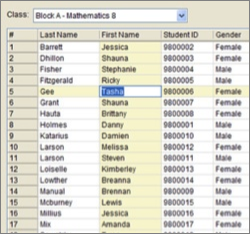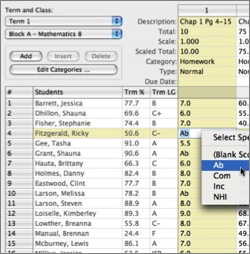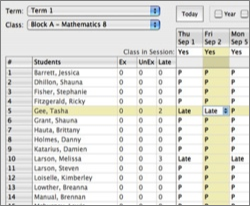Schools have to manage many different sets of data:
- Pupil information (name, contact details, etc.)
- Staff information (name, bank details for pay, etc.)
- Timetable (rooms, times, subject, staff, classes, etc.)
- Pupil attainment (marks, grades, comments, etc.)
- Pupil behaviour (dates, incidents, notes, etc.)
- Administration data (letters, forms, etc.)
- Financial records (wages, fees, etc.)
- Exam entries (times, dates, pupils, results, etc.)

Having all of the information in a single system allows schools to more easily connect data together.
For example, when viewing a pupil's record, the user could follow a link to the pupil's class, and from there a link to the pupil's teacher, and from there a link to the teacher's other classes, and so on.
These connections between sets of data allow complex tasks to easily be performed such as:
For example, when viewing a pupil's record, the user could follow a link to the pupil's class, and from there a link to the pupil's teacher, and from there a link to the teacher's other classes, and so on.
These connections between sets of data allow complex tasks to easily be performed such as:
- Sending letters to all parents of pupils who scored below 50% in their last English test
- Printing personalised timetables for IGCSE pupils (even though they have all chosen different options)
- Monitoring the progress of pupils in multiple subjects, over a number of years




An Example...
An example of a part of a typical school database showing the different data tables, the fields within each table, and the relationships between the tables:

Pretty complicated, isn't it? And this would just be a small part of the overall School Management System database!
(Don't worry - you don't have to learn this diagram - it's just an example to show you that this is not a simple database!)
If you have studied and understood the notes about relational databases, you will notice that many of the above tables contain foreign keys (primary keys from one table that are used in another table to create a relationship / link)
E.g. The PUPIL Data table contains two foreign keys: Family ID and Tutor Group ID. These foreign keys link a pupils to a specific family and tutor group
E.g. The PUPIL Data table contains two foreign keys: Family ID and Tutor Group ID. These foreign keys link a pupils to a specific family and tutor group
